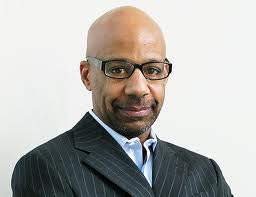 Kevin Blackistone
Kevin BlackistoneIt’s been five decades since Alabama, which will play Notre Dame in January for college football’s national crown, hired its first Black football coach, John Mitchell, who, before becoming an assistant, had been its first Black football player. It’s been almost 10 years since the Fighting Irish fired its first and only Black head football coach, Tyrone Willingham, three years into a five-year contract.
Yet, not much has changed in between when one looks at diversity in the leadership of college athletics.
“College sport still lags behind professional sports with opportunities for women and people of color for the top jobs,” declared Richard Lapchick, director of the Institute for Diversity and Ethics in Sport at the University of Central Florida, upon issuing his annual report card last week on hiring in college athletics. “The percentages remained stagnant in most categories of [top division college athletic] leadership, highlighting the general picture that White men run college sport.”
Lapchick’s research found that 90 percent of college presidents, 87.5 percent of athletic directors, and all of the commissioners of the 11 major conferences, representing 120 schools, were White.
And while there were 18 minority head coaches among those 120 schools in 2012, down one from a record the previous year, the number of Black coaches slipped last week when Colorado fired Jon Embree after just two seasons.
“I believe Black men have less opportunity [to coaches], shorter time if you will,” former Colorado coach Bill McCartney told ESPN 102.3 FM listeners last week in a prepared letter protesting Embree’s dismissal. “(Former coach) Dan Hawkins got five full years. Why not give … Embree five years? You signed him to a five-year contract.
“Men of color have a more difficult road to tread. It didn’t happen to me. Why should it happen to a Black man?”
It is not a trend that occurs in a vacuum. The U.S. Bureau of Labor and Statistics over the years found that Black workers are significantly less likely to maintain jobs as long as their White counterparts all the while being much less likely to gain employment in the first place.
One indisputable reason professional sports provide far more opportunities to people of color who desire to be managers of games rather than just players are punitive enactments like the Rooney Rule in the NFL. The rule, adopted in 2003, mandates that teams in search of head coaches interview at least one minority candidate. In 2009, the rule’s application was expanded to front-office openings. The league threatens franchises that fail to comply with fines and forfeiture of precious draft picks.
In the immediate aftermath of enactment of the Rooney Rule, the Cincinnati Bengals, which had not in 35 years as a franchise interviewed a person of color for offensive coordinator, defensive coordinator, or head coach, interviewed a Black defensive coordinator named Marvin Lewis and hired him as head coach. Since then, the NFL has had a record number of minority head coaches and minority front-office executives, like Jerry Reese of the Super Bowl-champion New York Giants.
What is most interesting about the successes of such punitive programs in pro sports is that pro sports are quasi-public institutions at best. They rely on the public dole for the construction of their stadia but not for their annual success. For example, the Washington NFL franchise was forced to integrate its all-White roster in the early 1960s before being allowed to play in a federally funded new stadium.
College athletics, however, exist for the most part in realms funded by the public—state legislatures and federal agencies. In 2009-10, according to the latest figures, public colleges and universities received $92.3 billion from state and local governments. Private institutions also received government funds.
Employment discrimination is a federal offense. What if institutions of higher learning were threatened with loss of government funding if they didn’t do more to open their hiring processes to make for a more diverse pool of applicants that could yield more people of color and women for athletic department and head coaching positions? I think the results would be immediate and palpable.
There is no reason, after all, while the revenue-generating college sports we watch on television of football and basketball should appear to be played mostly by athletes of color while so many of the people who put them through their paces and control their one-year renewable scholarships are the opposite. They should have as much opportunity to gain those jobs once their playing careers are over as their White teammates.
After all these years of college sports, however, the altruism does not exist on college campuses to ensure fairness in hiring anymore than it did for so many years in pro sports. College athletics need a little encouragement, or threat, as it may be.
Kevin B. Blackistone is a panelist at ESPN and Visiting Professor for the Shirley Povich Center for Sports Journalism at the University of Maryland. You can reach him via twitter: @ProfBlackistone





















